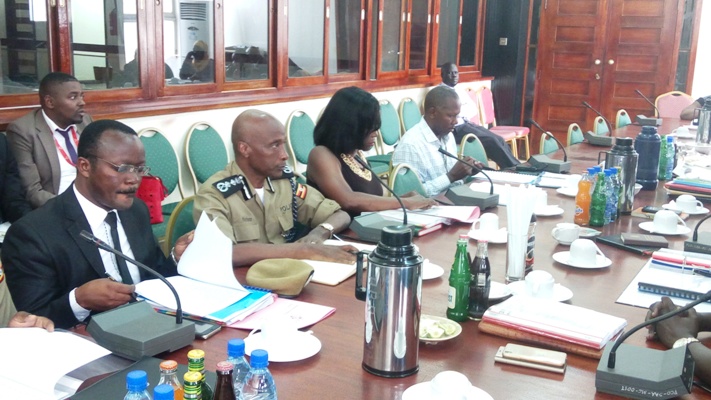August has been a tragic and dark month for Kenya. Tragedies seem to strike in August.
Prominent people die in August and some of the biggest terror attacks on the country have happened in August.
It was on August 7, 1998 for instance, that an explosion ripped through the United States Embassy in Nairobi killing 212 people and injuring 5,000. Kenya’s founding President Jomo Kenyatta also passed away in Mombasa on August 22, 1978.
But August has never been as bad on the economic front as in 2017, reports the Standard newspaper.
A survey released last week, the Stanbic Bank’s Purchasing Managers Index (PMI), rated August as the worst for businesses in the last four years. Though the private sector expected a bad month, given the General Election, it has turned out worse than most expected.
But the peak in August was a culmination of several factors in the first half of the year that have been chipping away at the economy as the country focuses on the election.
The first half of 2017 saw some unusually high inflation rates, which peaked at 11.7 per cent in May before slowing down to 9.2 per cent in June as the pressure on food prices eased.
On average, headline inflation stood at nine per cent while core inflation, which is non-food and non-fuels, stood at 3.3 per cent during the first six months of the year.
The worst hit were the lower income groups who spend a higher amount of their income on food and other basic commodities.
Official Government data shows that despite average inflation being recorded at 9.2 per cent in the month of June; that for lower income categories was higher at 12.14 per cent whereas middle income inflation was at 7.76 per cent, with upper income inflation at 3.82 per cent.
Some of the high costs of living came from rising rent prices despite low economic growth as investors sought attractive and stable returns on their investments.
Water prices are also on a rise despite heavy rationing in Nairobi and its environs, following an upward revision of sewerage tariffs due to the introduction of value added tax (VAT) earlier this year.
Transport has also not been spared following increases in pump prices of diesel and petrol.
But nothing has kept the economy one edge as the heated political activities that reached a new high in August after the Supreme Court nullified the presidential poll – a decision that sent shivers in the securities market, wiping off Sh130 billion in just two days.
The Nairobi Securities Exchange (NSE) has however started to recover the lost ground. This state of the economy is captured by the half-year economic and fiscal update by the Parliamentary Budget Office (PBO) dated August 2017.
Expert Advice
The report, which is expected to be released in the coming days, says the election fever that was witnessed across the country dampened private sector activity as most investors shied away.
“Subsequently, the heightened campaign activities rocked the entire country and resulted in excess liquidity in the market,” the PBO report notes.
The PBO provides expert advice to legislators on economic matters and budget implementation.
The primary function of the office is to provide professional services in respect of budget, finance and economic information to committees of Parliament.
During the first six months of the year, there was a steady rise in pump prices occasioned by a rise in international oil prices.
It is also worth noting that liquefied petroleum gas (LPG) prices are on the rise due to the rising cost of importation from the international market.
Refilling a 13-kg gas cylinder cost an average of Sh2,112 last month, up from the Sh1983 in December 2016, despite exemption of LPG from VAT. “Going forward, upward pressure on inflation is likely to persist on account of higher energy costs due to increased use of the relatively more expensive thermal energy, given low hydropower generation as water levels in the hydropower dams run low,” says the report.
The Budget Office also says that, in addition, the unfavourable weather exerted more pressure on the economy with a significant increase in the cost of living, on account of high food prices and energy prices. It was in the first half of the year that the retail sector was hit by significant turbulence, mostly attributed to financial and management challenges.
The report notes that established local retail chains such as Nakumatt got deep into debts to the extent of being unable to pay wages to the employees and having to close some outlets.
“It is expected that under performance of the retail sector could have negative impact on the economy in terms of employee layoffs and reduced corporate tax income, inability to pay other businesses in their supply chain and affect mall revenue as some are anchor tenants.”
Suppliers are among those who have received the biggest hit from the troubles in the retail sector and are finding it harder to keep afloat, especially now that access to credit to the private sector is drying up.
“Suppliers are unable to use this window to sustain their businesses given that banks have become more cautious lenders. Private sector credit uptake also decelerated to 2.1 per cent as at the end of May, 2017,” says the PBO.
The economic headwinds that blew over the economy in the first half of the year were not helped by the labour unrest, particularly from both health and education sectors.
“Unfortunately, labour relations in Kenya usually result in increase in wage bill without corresponding increase in productivity or service delivery given the fact that increase in salaries tends to be political incentives issued prior to elections or as a result of pressure from labour unions,” the report adds.
This is likely to sustain cost of service provision in the country as reviewing wages downwards is a sticky issue given that they are underpinned by law. It is also expected to create challenges in Government planning and inflationary pressures in the short-term.
The economic cost of the 100-day doctors’ strike that started late last year and spilled over into 2017, though hard to quantify, led to interruptions in medical services that led to loss of lives, wastage of man hours and a sick labour force.
On the other hand, the economic cost of the lecturers’ strike, though less apparent, is likely to manifest itself in reduced quality of education as school calendars are disrupted.
The insecurity challenges witnessed in 2016 continued to be a concern in the first half of 2017, though lower in intensity compared to last year.
New challenges are being faced in terms of improvised explosive devices (IEDs) that cause loss of life and destruction to property in selective areas of the country. This, combined with uncertainty in the political environment following the elections, is likely to affect the growth of the tourism sector.
The impact of all these has been felt after the economy registered a subdued growth of 4.7 per cent in the first quarter compared to 5.9 per cent in the same period last year.
This means that compared to the same period the previous year, the economy contracted by 1.2 per cent.
In the second quarter, the economy was subdued mainly due to increased campaign activities which – though may have contributed to increased liquidity – did not lead to increased consumption, especially of processed retail goods.
To put it into perspective, the economy must grow by at least 6.3 per cent in the last two quarters of the year so as to meet the 5.9 per cent economic growth target by National Treasury.
The budget experts say that the contraction was mainly as a result of poor performance of the agriculture sector given the ongoing drought which has seriously hampered agricultural production.
Agriculture recorded a growth of four per cent in the first quarter compared to 5.1 per cent in the same period in the previous year. Capping of interest rates slowed down growth in financial services sector that recorded a 5.3 per cent growth in the first quarter compared to 8.2 per cent the previous year.
The report attributes the slowdown to the decline in profits of commercial banks following recent regulatory reforms, including the setting reserves for non-performing loans and deceleration of private sector credit.
“The lower than expected economic performance is likely to persist in the second quarter as the challenges facing the agriculture sector have persisted and security concerns and political uncertainty have dampened the outlook of the tourism sector,” the PBO report notes.
In addition, since many industries in the country are agro-based, poor agricultural production is likely to negatively affect the manufacturing sector. Increased cost of production due to high energy prices as a result of decreased hydropower production is likely to adversely affected growth in the manufacturing sector.
On the currency side, the increase in demand for the dollar, among other pressures, saw the shilling depreciate against all major currencies in the first six months of the year.
The shilling weakened against the US dollar by 1.1 per cent, euro by 7 per cent and Sterling Pound by 3 per cent.
The depreciation was mainly attributed to increased dollar demand from oil and food importers, dividend payouts to foreign investors as the financial year came to an end and tightening of US monetary policy, which strengthened the US dollar.
Investor Confidence
On its part, the weakening of the shilling against the Euro could be attributed to increased investor’s confidence in Euro economy than US especially given the current inward-looking policies of the US which may be unattractive to many investors.
A weaker shilling poses several challenges. It could result in higher debt repayments due to decreased value of the shilling, which means more shillings are required to pay the debt.
It also means that more of the shilling is required to import the same volume of products, which then implies a higher import bill.
This will have a negative effect on the trade balance and subsequently the current account balance.
The currency was not helped by a surge in import volumes in the first half of 2017 due to importation of food items such as cereals, sugar and milk on account of the ongoing drought as well as increased importation of SGR related transport equipment.
On the flipside, export volumes have decreased as the country loses its market share for its major trading partners – Uganda and Tanzania – due to cheap imports from China.
The European Union (EU) has also put the country’s exports, especially vegetables, on a watch list due to quality concerns such as high levels of pesticides used and pests found in some of the products.
“In coming months, the trade deficit may widen further if the country continues to import food and the export sector continues to under-perform,” says the PBO report.
The total public debt and publicly guaranteed debt increased to Sh4.3 trillion (56 per cent of GDP) by the end of July 2017 with a relatively equal distribution between external and internal debt. Over the first half of 2017, the Government borrowed an additional Sh478.9 billion with 62 per cent being externally sourced and 38 per cent domestic.
During the period, Treasury bills increased by 20 per cent while Treasury bonds grew by seven per cent, indicating investor appetite shifting relatively to shorter-dated securities.
This may increase refinancing pressures for the Government in the second half of 2017 when they fall due, the report notes.
In addition to this, the country will also witness additional debt servicing pressures as the two-year syndicate loan procured in 2015 matures.
“Due to other demanding expenditures, the Government may have to procure another commercial debt to meet its debt obligations and thus increase the country’s public debt,” the PBO report notes.
-The Standard





